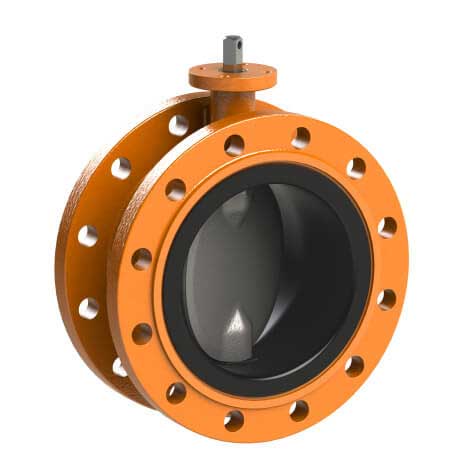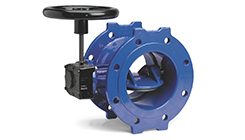
The most basic butterfly valve design is commonly called a concentric butterfly valves or resilient butterfly valves. In this type of valve, the stem is centered in the middle of the valve disc, which is centered in the pipe bore. This Concentric Butterfly Valves typically has a rubber (or resilient) seat and relies on the disc having a high level of contact with the seat to effect a seal. The disc will contact the seat the earliest during the 90 degree rotation. Dutco tenant have a complete range of butterfly valves sizes from 50 mm to 2000 mm This range of butterfly valves is suitable for Water applications. Rubber liner vulcanized on the body of the valve, allowing strong and reliable tightness, as well as the O ring cast on the body that prevents any need of gaskets. Short and Long body flanged Concentric Butterfly Valves are manufactured as concentric type disc; they can stand both directions of fluid and are maintenance-free. The body, not in contact with the fluid.
Features
- Concentric design
- One-piece body with flanges at the ends which give more resistance.
- The elastomer is vulcanized and allows use at pipe end without using counter flange.
- The "face to face" distance allows interchangeability with other types of valves (gate,)
- One piece shaft.
- 100% tight shut off, 0% leakage.
- Bi-directional sealing.
Design
- Body : Double Flanged type
- End Connection : EN 1092 PN 6, 10 and 16 ASME B16.5 cl. 150 / B16.47 cl. 150 MSS SP 44 cl. 150 AWWA C207 cl. B, D and E BS 10 table D and E Face to Face EN558-1/2 Series 13 ISO 5752 Series 13
- Body Seat : Non replaceable Lining bonded to the body
- Shaft Seal Design : O-ring bush
Functional Characterstics
- Application : On/off, regulating, control valve
- Design pressure : PS Maximum 16 bar
- Design temp : TS -20°C (-4°F) to +200° (392°F)
- Flow velocity : Max. 5 m/s for liquids, max. 50 m/s
Testing Procedures
- Shell strength test : EN 12266-1, P10 ISO 5208 API 598
- Shell tightness test : EN 12266-1, P11 ISO 5208 API 598
- Seat tightness test : EN 12266-1, P12, Rate A ISO 5208, Rate A API 598
- Operability test : EN 12266-2, F20 ISO 5208 API 598

